Back to: tail
Forward to: limbus
Sculpture
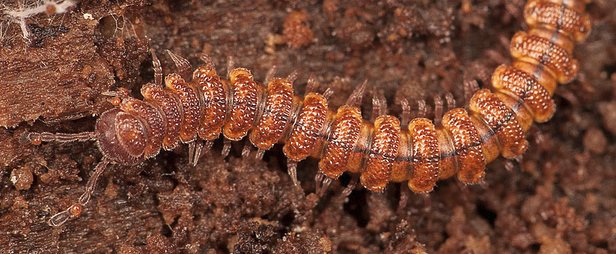
Scytonotus granulatus, southeast USA
Image © 2013 by Matt Bertone; used with permission
Many polydesmidans, like the one shown above, do not have smooth dorsal surfaces. Even to the unaided eye, the collum, the tergites on the haplosegments, and the metatergites and (sometimes) the paranota on the diplosegments all look 'grainy' or 'bumpy'. This dorsal macrosculpture appears in many different millipede families and is fairly variable, but two common patterns are shown below:
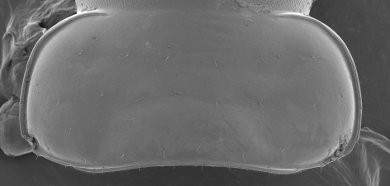 |
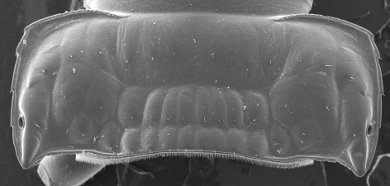 |
Smooth, no obvious sculpture |
'pattern A' (Mesibov 2008) |
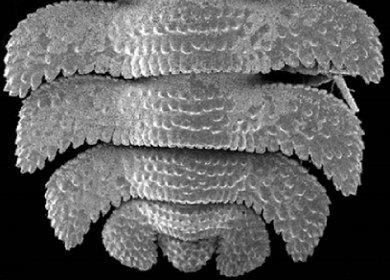 |
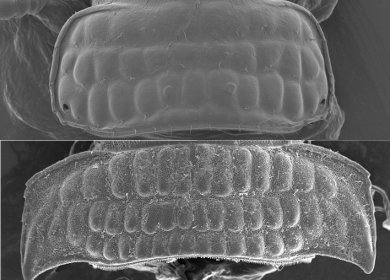 |
Richly sculptured! |
'pattern B' (Mesibov 2008) |
Dorsal 'bumps' are called tubercles, and each usually carries a single seta (image below, left). Tubercles are often present in three transverse rows ('pattern B', above right). Short tubercles are sometimes hard to see except in lateral view (image below, right).
 |
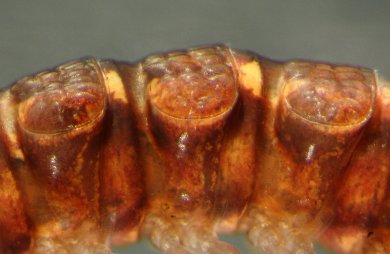 |
Astrolabius hoffmani |
Tasmaniosoma hickmanorum |
Many Polydesmida also have microsculpture which can only be clearly seen at very high magnification. Microsculpture can be present all over a body ring (including macrosculptural tubercles), and can vary from place to place on a ring. For example, microsculpture (when present) is usually different on the prozonite and metazonite. In species which cover their rings with soil particles, microsculpture may help to hold the soil, in the same way that roughening two wood or metal surfaces will help to hold them together when glued. Patterns of microsculpture in Polydesmida are very diverse; one example is shown below:
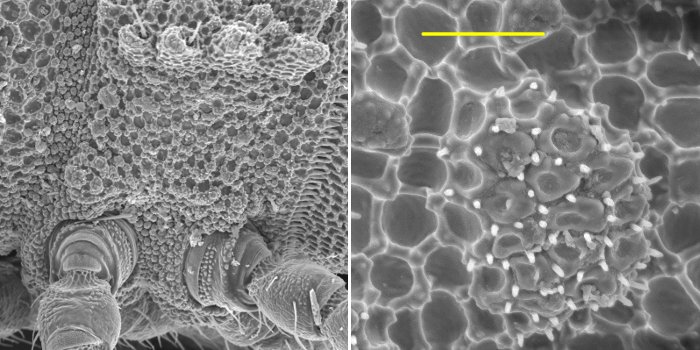
Microsculpture in two closely related species of Haplodesmidae from New South Wales, Australia
Left: Left lateral view of ventral half of midbody ring, Agathodesmus steeli
Right: Close-up of midbody metatergite, Agathodesmus johnsi; scale bar = 0.02 mm
The polydesmidan in the image below has paramedian spines growing out of its collum, tergites and metatergites. I am not sure whether to count these as sculpture or not, but they certainly are spectacular!
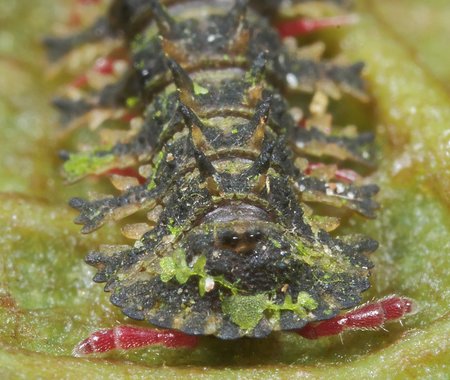
Unidentified polydesmidan, Ecuador
Image © 2011 by Paul Bertner; used with permission
Mesibov, R. 2008. The millipede genera Gephyrodesmus Jeekel, 1983 and Orthorhachis Jeekel, 1985 in southeastern Australia, a new Lissodesmus Chamberlin, 1920 from Victoria, and observations on male leg setae, spinnerets and metatergite sculpture (Diplopoda: Polydesmida: Dalodesmidae) Zootaxa 1790: 1-52.
Back to: tail
Forward to: limbus
